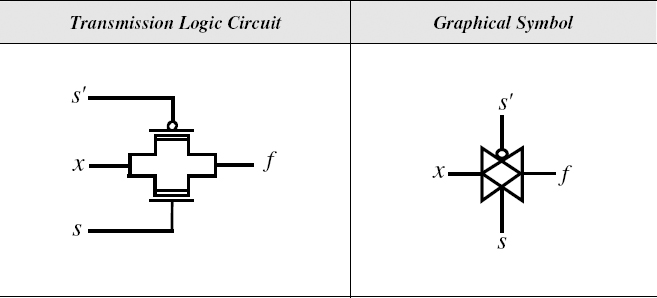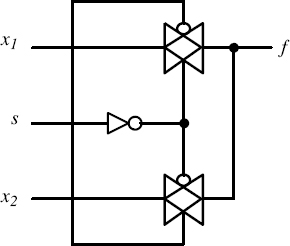5.8 TRANSMISSION GATES
A transmission gate is constructed from a normally open switch (NMOS transistor) wired in parallel with a normally closed switch (PMOS transistor), with complementary control signals. Figure 5.14 shows the transistor and schematic representations of a transmission gate. NMOS transistors pass logic 1 well and logic 0 poorly, and the opposite is true for PMOS. However, a transmission gate is equally good at passing a 0 or 1 when an external control signal is asserted.
5.8.1 Multiplexer
CMOS transmission gates provide an efficient way to build steering logic. Steering logic circuits are circuits that route data inputs to outputs based on the settings of control signals. As an example of such a circuit, consider a circuit that has two data inputs, x1 and x2, a single output, f, and a control input, s. The function steers x1 to f when s is equal to 0 and x2 to f when s is equal to 1. This selector function, referred to as a 2 : 1 multiplexer, is shown in Figure 5.15.

Figure 5.14 CMOS Transmission Gate

Figure 5.15 Implementation of a 2: 1 Multiplexer Using CMOS Transmission Gates
5.8.2 XOR Gate
The circuit diagram of a two-input XOR gate is shown in Figure 5.16. The number of transistors required to implement this function is greatly reduced using CMOS transmission ...
Get Introduction to Digital Systems: Modeling, Synthesis, and Simulation Using VHDL now with the O’Reilly learning platform.
O’Reilly members experience books, live events, courses curated by job role, and more from O’Reilly and nearly 200 top publishers.

